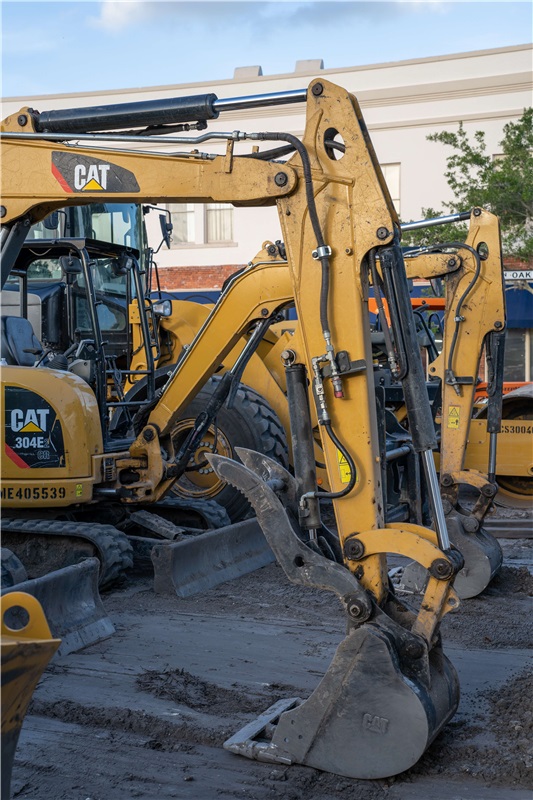
Excavators are widely used on a lot of possible applications: from construction sites (for removing material, dig trenches, holes and foundations) to demolition ones (for pulling down buildings and constructions), without forgetting mining sites (to dig, lift or move material around), forestry works (move felled trees) or Oil & Gas sites.
At the heart of an excavator is its hydraulic system; almost every part of an excavator is in fact linked to its hydraulic system. For instance, the excavator’s diesel engine is connected to the hydraulic pump, which supplies flow and pressure to the various functions of the machine. As the pump works, oil moves throughout the system, allowing the excavator’s tracks, boom, arm and bucket to work.
Behind excavators versatility is their capability of featuring dozens of different hydraulic attachments; hence it’s not unusual that operators need to install on the machine arm additional auxiliary hydraulics for running other hydraulic implements like thumbs, grapples, breakers, or buckets with tilt option. This article provides some useful tips for this kind of operation.
Preparing for the Installation of Auxiliary Hydraulics
To plumb in additional auxiliary hydraulics it’s often necessary to operate on both sides of the excavator stick, where high pressure lines are used to power specific attachments (like hammers or compactors) while the function of medium pressure lines is to rotate or tilt them.
Here’s a list of suggested precautions and recommended safety measures:
- before taking any fitting yet installed off the stick, the hydraulic attachment must be lowered first, to prevent it from suddenly dropping down.
- A basin will be helpful to collect oil spilled out.
- It’s better to think in advance of a proper route for the hoses to avoid damaging themwhen the excavator is at work: an incorrect route could in fact lead to hose-bucket mutual rubbing or to hoses pinched or ripped off by tree limbs.
- Before starting the installation, operators should care to collect all the necessary hydraulic parts (ball valves, elbows, fittings) and to verify that each one has the right thread.
- Size of hoses and fittings installed must suit the attachment flow rate (be it high-flow or standard-flow, depending on the excavator model) to avoid unnecessary losses of pressure and energy caused by overheating or turbulent flow.
Looking to Expand Your Excavator's Functionality? Learn How Our Auxiliary Hydraulics Can Help
Discover Faster's durable and efficient hydraulic couplings designed to enhance your equipment's performance.
Enhance Now
Guide to Installing Auxiliary Hydraulics
Usually the installation work consists of removing temporarily one or more lines and adding to the hydraulic circuit 3-way valves with auxiliary hydraulics installed, so to hook up there hoses of the hydraulic attachments that have to be connected to the excavator whenever it’s necessary.
Turning the ball valve in one direction or another will allow to power one of the attachments at a time (for instance, depending on the position of the ball valve, same push to the joystick will pressurize a thumb or tilt a bucket).
Why choose Faster for auxiliary hydraulics conversion of excavator
Superior performances offered by Faster ISO 16028 quick-release couplings (FFH series) make them a perfect choice when additional auxiliary hydraulics have to installed on an excavator stick. The excellent flow rate minimizes pressure drop and overheating, while Zinc-Nickel plating prevents red corrosion even in the most aggressive environments.
Also, the installation of Faster CUP (3FFH series) auxiliary hydraulics on excavator attachments is especially recommended taking into consideration the frequent presence of trapped pressure into hoses and the low connection effort required to connect under pressure.
Ready to learn more about our products?
Our team is here to guide you and offer tailored solutions to fit your needs.
Contact Us